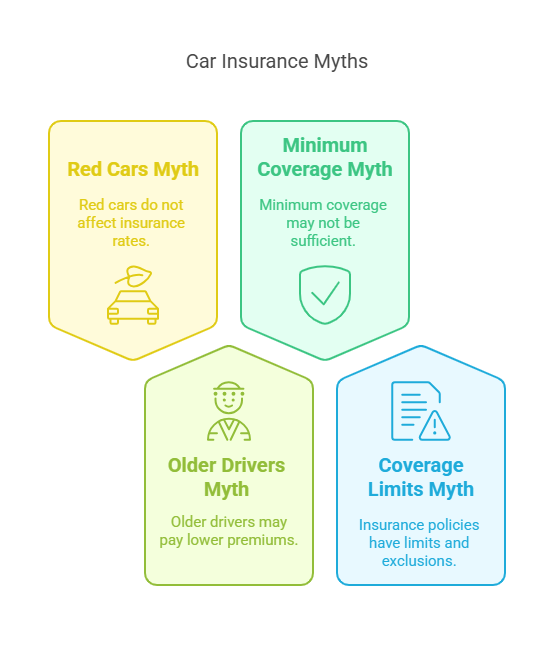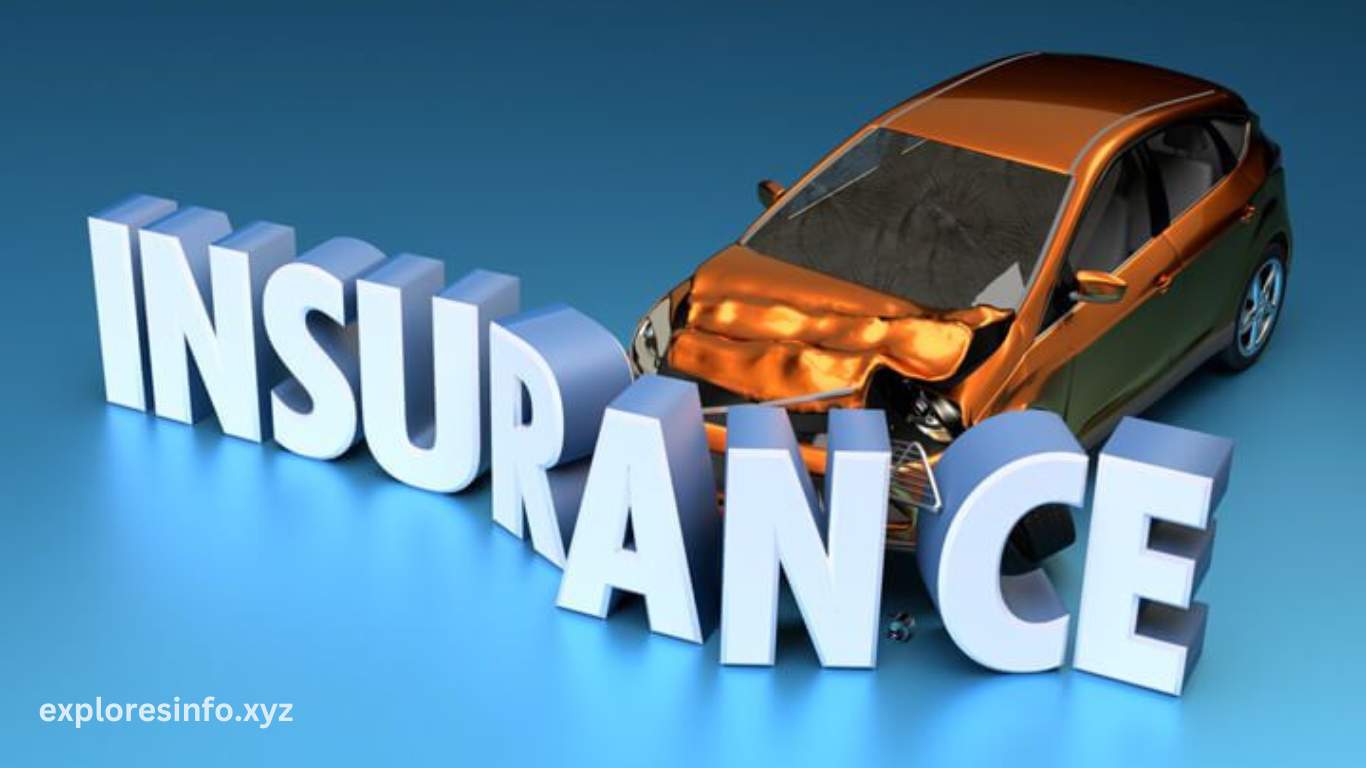Car insurance can feel like a maze of confusing terms, numbers, and fine print. But at its core, it’s about protecting you, your car, and your wallet from life’s unexpected twists and turns. Whether you’re a first-time driver or just looking to understand your policy better, this guide will break down everything you need to know about car insurance in simple, human terms. We’ll cover the basics, explain the different types of coverage, help you understand costs, and share tips to save money. Let’s dive in
What is Car Insurance?
Imagine you’re driving down the road, and suddenly—bam!—you’re in an accident. Your car is damaged, and so is the other driver’s. Or maybe your car gets stolen, or a hailstorm dents it while it’s parked. These are the kinds of situations car insurance is designed to help with.
You pay them a fee (called a premium), and in return, they agree to help cover the costs if something bad happens to your car or if you cause damage to someone else’s car or property. Car insurance is like a safety net for your car and your wallet. When you drive, there’s always a chance something unexpected could happen—like an accident, theft, or even a tree branch falling on your car. Car insurance is there to help cover the costs of these “uh-oh” moments so you don’t have to pay for everything out of pocket.
Here’s how it works:
- You pay a little bit of money (called a premium) to an insurance company, usually every month or every six months.
- In return, the insurance company promises to help cover the costs if something bad happens to your car or if you accidentally damage someone else’s car or property.
For example:
- If you get into a fender bender and your car needs repairs, your insurance can help pay for it.
- If you accidentally hit someone else’s car, your insurance can cover the damage to their vehicle.
- If your car gets stolen or damaged in a storm, your insurance can help you replace or fix it.
Car insurance isn’t just about protecting your car—it’s also about protecting you from big, unexpected expenses. Plus, in most places, it’s the law to have at least some basic car insurance. So, think of it as a way to drive with peace of mind, knowing you’re covered if life throws you a curveball on the road.
Here’s why car insurance is so important:
- It’s the Law: In most places, you’re required to have at least some basic car insurance to legally drive.
- It Protects Your Wallet: Without insurance, you’d have to pay for repairs, medical bills, or legal fees out of pocket—and those costs can add up fast.
- It Gives You Peace of Mind: Knowing you’re covered makes driving less stressful.
The Different Types of Car Insurance Coverage
Car insurance isn’t one-size-fits-all. There are several types of coverage, each designed to protect you in different situations. Here’s a breakdown of the most common ones:
1. Liability Coverage
- Bodily Injury Liability: If you cause an accident and someone else gets hurt, this helps pay for their medical bills, lost wages, and even legal fees if they sue you.
- Property Damage Liability: If you damage someone else’s car or property (like a fence or mailbox), this covers the repair or replacement costs.
Think of liability coverage as your “I messed up” protection. It doesn’t cover your own car or injuries—just the other person’s.
2. Collision Coverage
This covers repairs to your car if you’re in an accident, whether it’s your fault or not. For example, if you hit a tree or another car, collision coverage will help pay to fix your vehicle.
3. Comprehensive Coverage
This is your “everything else” coverage. It protects your car from things that aren’t accidents, like:
- Theft
- Vandalism
- Natural disasters (floods, hurricanes, etc.)
- Falling objects (like a tree branch)
- Animal collisions (like hitting a deer)
If you’re financing or leasing your car, your lender will likely require both collision and comprehensive coverage.
4. Personal Injury Protection
These cover medical expenses for you and your passengers after an accident, no matter who’s at fault. PIP also covers things like lost wages and childcare costs, while MedPay is more limited to medical bills.
5. Uninsured/Underinsured Motorist Coverage
What if you’re hit by a driver who doesn’t have insurance—or doesn’t have enough insurance to cover the damage? This coverage steps in to pay for your repairs, medical bills, and other costs.
6. Gap Insurance
If your car is totaled or stolen, your insurance will only pay its current value—not what you originally paid for it. Gap insurance covers the difference, which is especially helpful if you’re still paying off a car loan or lease.
What Affects the Cost of Car Insurance?
Car insurance costs (your premiums) can vary a lot depending on who you are, where you live, and what you drive. This is the main factors that influence your rates:
1. Your Driving Record
If you’ve had accidents or traffic tickets, insurers see you as a higher risk, and your premiums will go up. A clean driving record, on the other hand, can save you money.
2. Your Age and Gender
Younger drivers, especially teenagers, tend to pay more because they’re less experienced. Statistically, men under 25 are considered higher risk and may face higher rates.
3. Where You Live
If you live in a busy city with lots of traffic and crime, your premiums will likely be higher than if you live in a quiet rural area.
4. Your Car
Expensive, high-performance, or luxury cars cost more to insure because they’re more expensive to repair or replace.
5. Your Credit Score
In most states, insurers use your credit score to determine your rates. A higher score can lead to lower premiums because it’s seen as a sign of financial responsibility.
6. Your Coverage Choices
Choosing a higher deductible (the amount you pay out of pocket before insurance kicks in) can lower your premiums, but it also means you’ll pay more if you file a claim.

How to Save Money on Car Insurance
Car insurance can be expensive, but there are plenty of ways to save money without sacrificing coverage. Here are some tips:
1. Shop Around
Deal your car insurance around your neighboring shop.
2. Bundle Your Policies
Bundling is easy! Here’s how to get started:
1. Check Your Current Policies
Look at what you’re paying for car, home, or renters insurance. This will help you compare prices when you shop around.
2. Shop Around
Get quotes from multiple insurers to see who offers the best bundle deal. Don’t just stick with your current company—compare their offer with others.
3. Ask About Discounts
When you get a quote, ask about multi-policy discounts and any other savings you might qualify for.
4. Review the Coverage
Make sure the bundled policy meets your needs. For example, does it have enough liability coverage? Are there any extra perks?
5. Make the Switch
Once you find the right deal, contact the insurer to set up your bundled policies. They’ll help you cancel your old policies (if needed) and get everything switched over.
Things to Watch Out For
While bundling is great, it’s not always the best option for everyone.
- Don’t Sacrifice Coverage for Savings: Make sure the bundled policy still gives you the protection you need.
- Compare Individual Policies: Sometimes, buying separate policies from different companies can be cheaper than bundling. Always compare your options.
- Check for Hidden Fees: Some insurers charge fees for canceling your old policies. Ask about these upfront.
Is Bundling Right for You?
Bundling is a great option if:
- You have multiple types of insurance (like car and home).
- You want to save money without sacrificing coverage.
- You prefer the convenience of managing one account.
If you’re not sure, get quotes for both bundled and individual policies to see which option works best for your budget and needs.
3. Ask About Discounts
Insurers offer all kinds of discounts, such as:
- Safe driver discounts
- Good student discounts
- Military discounts
- Discounts for anti-theft devices or safety features
4. Raise Your Deductible
Choosing a higher deductible can lower your premiums, but make sure you can afford the out-of-pocket cost if you need to file a claim.
5. Drive Less
If you don’t drive much, you might qualify for a low-mileage discount.
6. Improve Your Credit Score
Paying bills on time and reducing debt can help improve your credit score, which can lead to lower insurance rates.
7. Drive a Safe Car
Cars with advanced safety features (like airbags, anti-lock brakes, and backup cameras) often qualify for lower premiums.
Common Car Insurance Myths
There’s a lot of misinformation out there about car insurance. Let’s clear up some common myths:
1. Red Cars Cost More to Insure
Colors of your cars not affect the insurance rate
2. Older Drivers Always Pay More
While young drivers pay higher premiums, older drivers with clean records often enjoy lower rates.
3. Minimum Coverage is Enough
While minimum coverage meets legal requirements, it may not provide enough protection in a serious accident. Consider higher limits for better financial security.
4. Your Insurance Covers Everything
Car insurance policies have limits and exclusions. For example, wear and tear or mechanical breakdowns aren’t covered.

How to File a Car Insurance Claim
If you’re in an accident or your car is damaged, here’s what to do:
- Stay Calm and Safe: Check for injuries and call 911 if needed.
- Document the Scene: Take photos, gather witness information, and file a police report.
- Contact Your Insurer: Notify your insurance company as soon as possible.
- Provide Information: Share details about the incident, including photos and police reports.
- Get an Estimate: Your insurer may send an adjuster or ask you to get an estimate from a repair shop.
- Review the Settlement: Make sure the settlement covers your losses.
- Repair Your Car: Use the settlement to fix or replace your vehicle.
Choosing the Right Car Insurance Provider
When picking an insurer, consider:
- Financial Stability: Choose a company with strong financial ratings.
- Customer Service: Read reviews and ask for recommendations.
- Coverage Options: Make sure they offer the types of coverage you need.
- Discounts: Look for ways to save.
- Ease of Use: Check if they have a user-friendly website or app.
Final Thoughts
Car insurance doesn’t have to be overwhelming. By understanding the basics, knowing what affects your rates, and exploring ways to save, you can find a policy that fits your needs and budget. Regularly review your coverage, shop around for the best rates, and don’t be afraid to ask questions. With the right knowledge, you can drive with confidence, knowing you’re protected no matter what the road throws your way.
Frequently Asked Questions (FAQs) About Car Insurance – In Simple Terms
Car insurance can be confusing, but it doesn’t have to be! Here are some common questions people have about car insurance, answered in plain, easy-to-understand language.
1. What is car insurance, and why do I need it?
Car insurance is like a safety net for your car and your wallet. If you get into an accident, your car gets stolen, or something else goes wrong, car insurance helps cover the costs so you don’t have to pay for everything yourself. Plus, in most places, it’s the law to have at least some basic car insurance.
2. What types of car insurance are there?
There are a few main types:
- Liability Coverage: Covers damage or injuries you cause to others.
- Collision Coverage: Pays for repairs to your car after an accident.
- Comprehensive Coverage: Covers things like theft, vandalism, or weather damage.
- Uninsured/Underinsured Motorist Coverage: Protects you if the other driver doesn’t have enough insurance.
- Personal Injury Protection (PIP): Covers medical bills for you and your passengers
3. How much car insurance do I need?
It depends on your situation. At a minimum, you need enough to meet your state’s legal requirements. But if you have a newer car, a loan, or just want more protection, you might want extra coverage like collision or comprehensive.
4. What affects how much I pay for car insurance?
Lots of things! Your driving record, age, where you live, the type of car you drive, and even your credit score can all impact your rates. For example, a clean driving record usually means lower premiums, while a fancy sports car might cost more to insure.
5. How can I save money ?
Here are some easy ways to save:
- Shop around and compare quotes.
- Ask about discounts (like safe driver, good student, or bundling policies).
- Choose a higher deductible (but make sure you can afford it if you need to file a claim).
- Drive safely and keep your record clean.
6. What’s a deductible?
For example, if you have a 500deductibleand500deductibleand2,000 in damage, you pay $500, and your insurance pays the rest. Choosing a higher deductible can lower your premiums, but it means you’ll pay more if something happens.
7. Do I need uninsured/underinsured motorist coverage?
It’s a good idea, especially if you live in an area with lots of uninsured drivers. This coverage protects you if you’re hit by someone who doesn’t have insurance—or doesn’t have enough to cover the damage.
8. What’s gap insurance, and do I need it?
Gap insurance is helpful if you’re financing or leasing a car. If your car is totaled or stolen, your insurance will only pay its current value—not what you still owe on your loan. Gap insurance covers the difference.
9. Will my rates go up if I file a claim?
It depends. If you’re at fault in an accident, your rates might go up. But if the accident wasn’t your fault, your rates might stay the same. Always check with your insurer to be sure.
10. Can I drive someone else’s car with my insurance?
Sometimes, but not always. Some policies cover you when driving someone else’s car, but others don’t. Check with your insurer before borrowing a car.
11. What happens if I don’t have car insurance?
Driving without insurance is risky. If you get caught, you could face fines, license suspension, or even legal trouble. Plus, if you’re in an accident, you’ll have to pay for everything out of pocket.
12. How can I file a insurance claim?
If you’re in an accident or your car is damaged:
- Stay safe and call 911 if needed.
- Take photos and gather information (like the other driver’s details).
- Contact your insurance company to start the claim.
- Follow their instructions to get your car repaired or replaced.
13. Can I change my car insurance policy?
Yes! You can change your policy anytime, but there might be fees if you cancel mid-term. Always compare quotes and make sure the new policy meets your needs before switching.
14. Does car insurance cover rental cars?
Sometimes. Some policies cover rental cars, but others don’t. Check with your insurer before renting a car, and consider buying rental insurance if needed.
15. How often should I review my car insurance?
At least once a year, or whenever something big changes in your life (like moving, buying a new car, or paying off a loan). Regular reviews help make sure you’re not overpaying and have the right coverage.
Car insurance doesn’t have to be complicated. By understanding the basics and asking the right questions, you can find a policy that works for you and gives you peace of mind on the road
